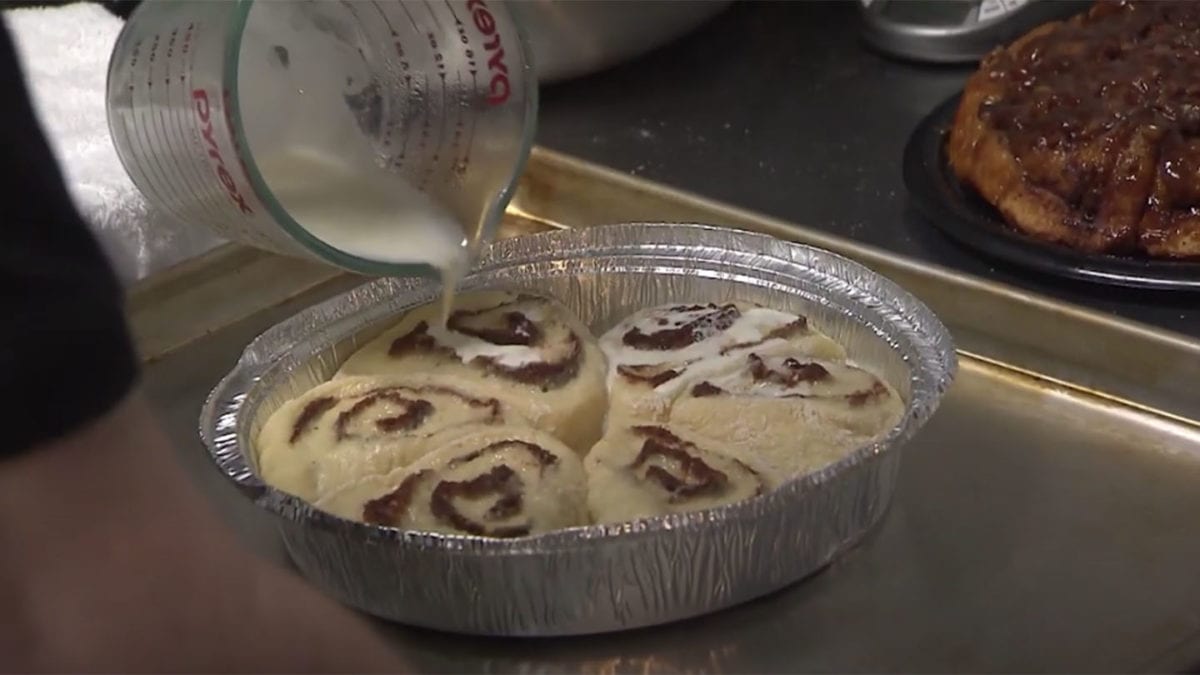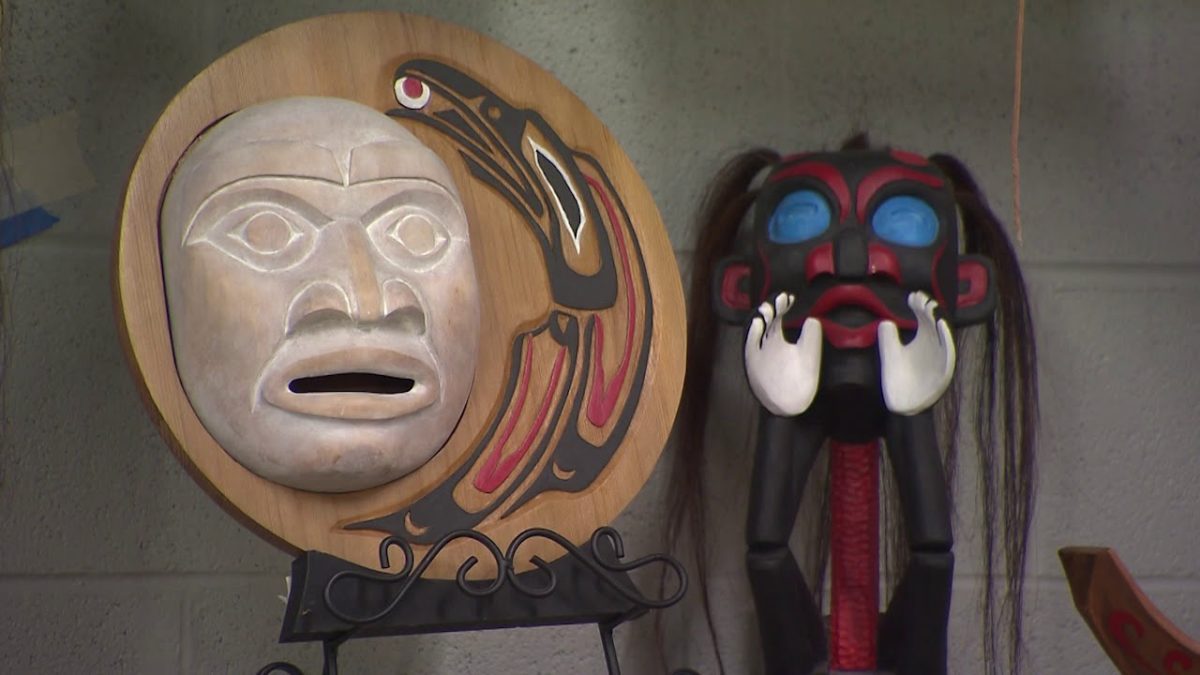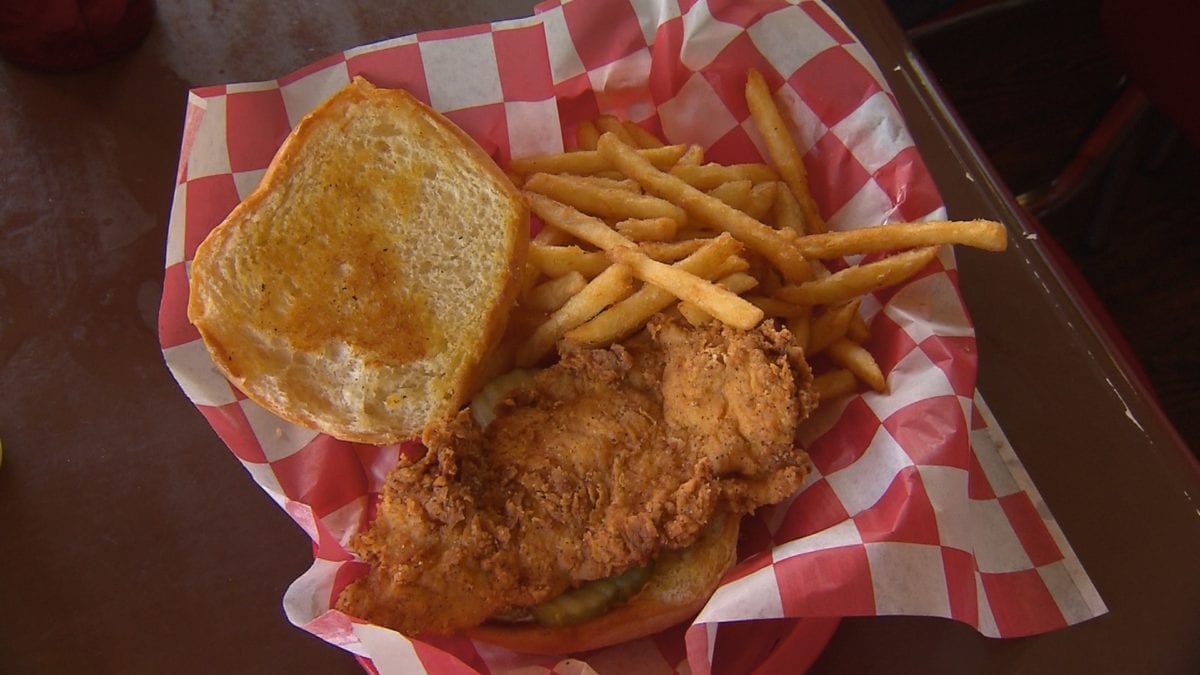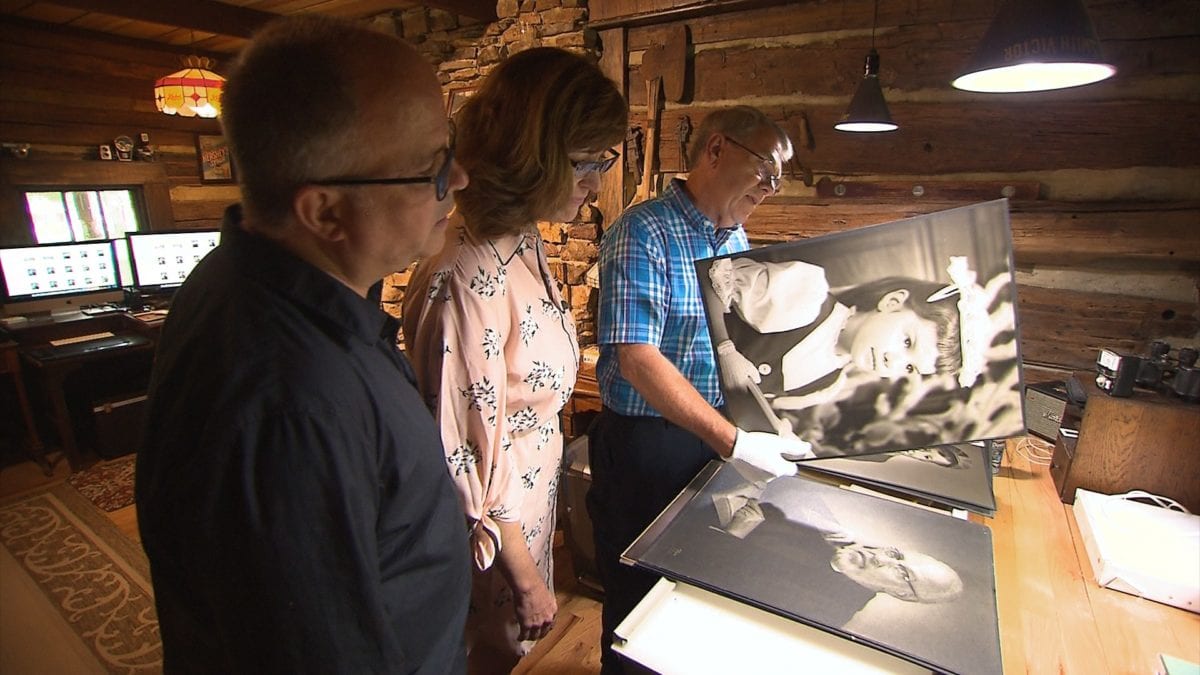- This time on Tennessee Crossroads we meet artist Ken Means and his whimsical carousel creatures in Franklin. Then, find some crafts, coffee, and cookies at Gallery 41 in Pelham. We will take in a treasure of historic photos down in Columbia, then take in some lunch at the Country Boy restaurant in Leipers Fork. Hi everybody, I'm Joe Elmore. It's time again for Tennessee Crossroads. There's something quite magical about an old-time carousel, something that inspired a local artist to take on the task of building his own. Ken Means is reviving an almost lost art form while following a long-time dream. And, as we discovered, you can watch him in action in his studio inside the factory in Franklin.
- You can't go into a carousel and walk out not be a little happier and that's what I wanna leave behind.
- [Joe] If you take a rotary ride into a special chapter of history, you'll discover the golden age of carousels from 1880 to 1930. While thousands of classic wooden models were built and operated during the era, today, less than 200 are still running. One is in Memphis. It was built by Gustav Dentzel in 1909, recently restored, and now housed in the Memphis Children's Museum. In the late 1990's, famed Nashville-native artist Red Grooms created his own quirky, untraditional carousel. Instead of horses or other animals, you rode on images of historical Tennessee characters. While the ride was short, the carousel's spirit lives on. Well, here at the factory in Franklin, you can witness the creation of the latest Tennessee carousel. It's the soon-to-be-finished long-term dream of an artist named Ken Means.
- [Ken] I started out as an oil painter, portraits and that sort of thing, and then I went into scenic art. I did some scenes for movies and plays. I did several for quite a number of plays. I started carving as kind of a hobby.
- [Joe] Ken Means is a veteran artist whose talent covers the gamut. When he and wife Betty moved from Oregon to Franklin to be closer to their kids, Ken brought along 20 completed carousel animals with more to come. His collection is unique because most of the colorful creatures are named after animals in popular stories. Hidalgo in the back corner there is from a true-life story of a horse, an Indian pony that did a race across Africa. I did Prince Valiant's horse, that black one way in the back. Prince Valiant was the son of King Arthur so when I did Prince Valiant's horse, I did King Arthur's horse.
- [Joe] Then there's the largest member of his menagerie, this hearty and hefty lion.
- [Ken] Aslan. He's from the Bell, Book, and Candle series, the big huge lion that's in that.
- [Joe] For each animal idea, Ken creates a sketch, which may or may not look like the finished piece.
- The drawings are just to get the pieces going. That's the rough idea, I build them off of that and then when I'm carving away, well we'll make this change, we'll do that. You'll see it changes from the lion to the lion.
- [Joe] When it's time to start putting those carving tools to use, the head always comes first.
- I try to get the personality of the animal to start with. I don't look for realism as much as I do the essence of the animal. If I can capture the look of the goat, the essence of the goat, that's what I'm after. The bodies are usually the last part. On all the animals, the bodies are hollow, like that one over there. The necks are hollow, and on the big animals, even the heads are hollow.
- [Joe] Inside the hollow bodies, Ken places a time capsule of sorts. Pictures, a poem maybe. Just a way of leaving a piece of the present for the future.
- The reason for that being was I've done a lot of restoration work. By the time I break something open and look inside, there's nothing there. The only thing I ever found was in one, I found some shredded newspaper and in another one I found a big rat.
- [Joe] Needless to say, he gets lots of attention from passers-by. To wide-eyed youngsters, the colorful whimsical characters can be irresistible.
- [Ken] Probably have at least minimum a hundred kids.
- [Joe] Is that right? You don't mind?
- No, heck no. That's what it's all about. You go to a museum or you go to a gallery or you go someplace and you can't touch anything. You can't take pictures. Not here. Kids come in and they go crazy and they put their fingers all over it and I'm cleaning windows and horses every day. And that's what I wanna leave behind, something that people can use for a hundred years. These animals are built strong enough to withstand, with care, 100 years or more.
- [Joe] Before long, Ken will have completed 32 carousel creatures, 11 standers, or stationary animals, 21 jumpers, the ones that move up and down, and two chariots, one of which will be wheelchair compatible. So soon, his merry-go-round menagerie will need a home.
- We're looking for a place to put it. I like Cheekwood. I like Franklin. Somewhere between there and here. Then I can walk away and feel that I've left a contribution to society that everybody can enjoy.
- By the way, we'll try to keep you posted on Ken's progress as time goes on. Whether you like your latte with a twist or you're partial to mocha frappe or whatever, it seems like trendy coffee shops are popping up on every street corner. Miranda Cohen found a little place in Pelham with a different twist. Sure, you can get your coffee and cookies, but you'll find much more at Gallery 41.
- [Miranda] Just over a mile down route 41 in Grundy County, you will find what is quickly becoming one of the hottest spots in Pelham, Tennessee. Former truck drivers from New Jersey, Jody and Glen Smith, are meeting, greeting, serving, brewing, and baking up pure magic at an eclectic coffee shop with a name to match.
- Big truck drivers in driving the country are like, route 66. Well wait, this is route 41 out here and everybody knows it as 41. So let's play into that and that's how we came across Gallery 41.
- [Miranda] Jody and Glen always loved the idea of having their own coffee shop in a place where Glen could create his art, beautiful metal sculptures and signs. But they never imagined the roads they traveled would lead them to Pelham.
- As we were driving, we would think, well gee, we don't wanna do this all the time. Where would we like to end up? I wanted the coffee shop and Glen wanted a workshop. So we wanted a building that would combine the two of those, calling it a gallery because we wanted coffee and baked goods, but we also wanted artwork as well. We narrowed it down to Tennessee and we just love it here.
- [Miranda] Jody and Glen found the perfect space in an old grocery store where, years ago, it was also once a much-beloved meeting place. Gallery 41 is state-of-the-art with the exception of one thing.
- We wanted it to be very peaceful. We could have wifi, but we chose not to. We didn't want people just sitting here, looking at their laptop or their phone the whole time. Let's encourage people to talk to one another.
- [Miranda] Jody Smith is combining her special ingredients with her years of experience on the road, folding them all into her own made-from-scratch creations, leaving her customers speechless.
- For me, it's either their cinnamon buns and their chocolate chip cookie, particularly with ice cream and a little chocolate sauce on top. It's wonderful. It obviously has a homemade taste. It tastes like they have put some love and effort into it. It's always fresh and the flavors are just wonderful.
- I'm a big fan of cinnamon, I'm a big fan of cinnamon buns, so again, a lot of trial and error, trying different things to make it better, whether it was changing up some of the sugars or adding more cinnamon or even what to put in for the icing. Everything here is totally from scratch.
- [Miranda] But they are in close competition with Jody's handmade cookies. The standard chocolate chip is anything but standard.
- Took a basic recipe, one that I've used throughout the years, and then I tried to make it better, and I feel like I have. I wanted it to look a certain way, I wanted it to taste a certain way, I wanted the texture and all that things, so that was a lot of trial and error.
- [Miranda] And surprisingly, her best seller was inspired by a local soda with a twist.
- There's a local drink here called Sun Drop, and I thought, well gee, if I can make a cookie similar in that taste, and that's how I came up with my lemon drop cookie. So I just took a lemon cookie and played with it and add different flavors, you know, fruits, and that was the lemon drop. Now, I thought the chocolate chip was gonna be the most popular, but the lemon drop has become the most popular.
- [Miranda] And for the die-hard chocolate lover--
- I just recently came up with the Cocoa Cloud. I wanted something that was not a brownie but like a brownie, just different, but deep, rich, and chocolatey. Sweet, but more the deep dark chocolate with a little bit of sweetness.
- [Miranda] And if you need to stretch your legs after the decadent desserts, the art gallery is just steps away. Handcrafted works from local artists from Pelham, Jasper, Manchester, Hillsboro, and Murfreesboro just to name a few. Jody loves all of her hand-picked art, but she is particularly fond of one artist and his masterful metalwork.
- I'm so proud of my husband and I've always encouraged him and told him I think he does beautiful work. What was neat was for him to put it out and for him to hear other people say that.
- [Miranda] From the handcrafted beverages to the delicious homemade baked goods to one-of-a-kind works of local art, Gallery 41 is warm and inviting and will send you back down route 41 feeling a little happier.
- I wanted to be able to support the community. We've had a number of people come and sometimes they just walk in the door and they'd say, I'm so glad you guys are here. Like I said, we've lived a lot of places. We never heard that from people. And we wanted our customers to be able to come in and we wanted to be able to lift them up. Now, whether it was making them their special drink or giving them their favorite cookie or ice cream or whatever, or just being there as a listening ear, we just really feel that's important to encourage all our customers.
- Thanks a lot, Miranda. There was a time when taking a photograph required money, time, patience, planning, and an artist's eye. They were scarce, they were special. So, when some people in Columbia found more than a million photographic negatives, some dating back to 1870, well, they knew they had found a buried treasure. Rob Wilds recently found out how a local gallery is making sure those photos will be around well into the future.
- [Rob] West Seventh Company in Columbia didn't start out to be a photo gallery. That phase of its life began appropriately enough with a conversation about a camera. Joel Friddell and his wife, Kim Hayes, were buying the building from David White. This building had long housed a photography studio, but the huge camera would have to go. That just didn't sit well with Joel.
- He and I both talked about it being sold out of the county and we just thought that that was a terrible thing and his wife wouldn't let him take it home 'cause it was too big. I said, well one day there'll be a museum here, so I'll buy the camera and it'll stay here at your camera shop.
- [Rob] Then David mentioned the negatives stored in the building, a collection of W.A. Orman, started more than half a century ago.
- We have really just scratched the surface and when you deal with this many photos and there are more than a million--
- [Rob] More than a million?
- More than a million.
- Honest, million dollar.
- Yeah.
- Exageration but--
- Not an exaggeration, million. We have boxes and boxes that we have yet to even open and each one of these has envelopes and the envelopes are stuffed and inside the envelopes are negatives. Very thin, so you just don't know how many negatives are in there.
- [Rob] Of course, just looking at and cataloging all those negatives could be a life's work for David, Joel, and Kim, but not working really, a treasure hunt.
- So here, when you get to this truck, it has the insignia on it. See that's where--
- Right there.
- Betty will have to ask. My wife laughs at me. I'll go out and open up a box and I'll come back inside. You wouldn't believe what I found. Look at the way the clouds are that day.
- [Rob] Some can be saved, some may be lost for good. Like these, taken of a fire in Spring Hill, which virtually destroyed the whole town back in 1938.
- [David] The whole town basically burned down, but look, see.
- [Kim] So you like to soak 'em?
- [David] Well, you can't soak these because if you do, then most of the rest of it--
- It'll just come off.
- [David] Will just come completely off. So the only thing you can do is scan them.
- [Joel] Uh huh, and just start piecing it back together.
- [David] And just start piecing it back together?
- [Rob] Still, many survived, each giving us a look at how things were in Columbia, Tennessee.
- [Joel] The workers have posed because in those days, you'd have to do a really long exposure. They're all over the building including, there's a guy standing on the very tip-top of the clock tower. That one is a pretty amazing photo.
- [Rob] Also amazing, a photo of an even older courthouse.
- We found the previous courthouse, and that was something that was very unexpected. They tore it down in 1903 and the photo appears to be the preparation for tearing it down. It's a wonderful full-on photo and it's just amazing that we have a photo of the previous courthouse.
- [Rob] Then there are the photos of the kinds of tragedies every town endures, a fire at Gordon's Department Store.
- And it's such a cold day that while they're spraying water on the building, it's freezing, and so as soon as they take this picture, you've got icicles where a fire just was and in the lower window are mannequins that are just still smiling and happy.
- I was here then. I remember that. We were called at home that Gordon's was on fire.
- [Rob] Bet that was a traumatic event.
- Oh, it was.
- So you're helping out, telling the people here what's in these photographs, aren't you?
- Any of 'em that I know.
- Betty Crosier knows about many of these photos because she knows the people in them.
- Herb Wadely Hayes Jackson is who that is.
- [Rob] She's lived in Columbia all her life, and now, in her 90's, she came into the gallery and found family.
- When I came in the first time, that's when I saw my husband. His name is Houston Crosier, called Hous. Hous is all anybody ever called him. I didn't know him when he looked like that.
- Well, he looks like he's kinda got a little attitude there leaning on the gas pump like that.
- And then I looked across on the wall over here and there was my daddy in front of a Western Union. He was the manager of the Western Union. There was nothing back, no name at all. They had no idea.
- We didn't know anything about it.
- Who it was.
- [Rob] Betty and other people in town had become sort of detectives to help find out about the people and the places in the photographs.
- We ran into his daughter and it's not who we were told it was. We're exposing people to photos that they haven't seen in decades, but we're also having people that are coming in that are 60, 70, 90 years old and they're telling us stories about family businesses, finding family members. So, there's sort of a race against time here, to be able to get the information that you couldn't get any other way.
- That is Bowser Frakes and he was married to my mother's sister.
- [Rob] So, with close to a million more negatives to look through, nobody knows what photos are ahead. But David White definitely knows what they've found.
- This is in front of the Bethel Coffee Shop and that's 1938. When you look at the way these photographers, the equipment that they had to use, the film that they had to use, to get great shots, they had to be a master of photography. The people just realized how much work it was to get a photograph back then, good, was a big ordeal.
- [Rob] Looking at the photos, however, well that's a delight.
- That one's awesome.
- [Rob] And with many more negatives to explore and restore, Joel knows he may not get to them all before he retires.
- We realize that we won't, that this is such an enormous process, there's so much research that has to be done, and just the physical nature of going through the photos, when you have this many, this is something that we're gonna have to set up a non-profit in the future to be able to make sure that this collection continues, is accessible, and that the research continues.
- [Rob] And the results? On view at the West Seventh Company Gallery in Columbia.
- Sometimes a bit of nostalgia can be the best seasoning for a meal. That's true for the Country Boy Restaurant in Leipers Fork. As Tammi Arender found out, a couple who's not even from Tennessee originally decided to bring this iconic little diner back to life.
- [Tammi] The laid-back feel of Leipers Fork is something of legend, virtually untouched by the big city just about 40 minutes northeast of here.
- Thanks for calling Country Boy.
- [Tammi] The reliable ring of an old rotary phone along with the mild roar of a hungry crowd means one thing: You're in the heart of Leipers Fork at the Country Boy restaurant.
- There's fifth generations here, so that's why we love this and we do what we do.
- [Tammi] Country Boy opened in 1968, serving the locals made-from-scratch Southern comfort food, so Tom Fanning and Diana English made it their mission to bring this place back to the future.
- Diana worked here for five or six years and actually got to know everybody, and then when it shut down, it was just, I wouldn't say devastating but part of the town lost something 'cause there was no place for people to come for breakfast in the morning, for lunch, and there was something was missing. And she told me we need to bring it back.
- [Tammi] And so they did. The establishment had been turned into a fine dining restaurant by the previous owners, so they had their work cut out for them. Despite its challenges, Diana knew this place needed to get back to its roots.
- She was afraid that it was gonna turn something back into what it was and not be what the community needed. It's worth it.
- That's your great grandmother, the baby there.
- It is. I don't know how it got in here. It's in a few places around here that are like, old-timey, and I think it's just one of the most old and iconicy pictures of this area.
- [Tammi] Jacob Crawford is one of those locals. You can find him at the Country Boy at least three days a week, and although you would expect him to say he comes for the food, he says that's actually secondary.
- The waitresses are my therapists. That's pretty much how I do it. I come in here and I talk to them every morning.
- [Tammi] There's also some aroma therapy going on. The smells that come from this kitchen can take you back to Grandma's house. From homemade pies and fresh-cut meat to the country-fried steak, buttermilk biscuits, and country ham.
- Everything here is made from scratch, back then. There's three things that we don't do from scratch and I'm not gonna tell you. You have to find out. It adds just a little bit more, 'cause you're not taking it out of a box that's frozen or whatever and throwing it in fryer. Are you guys from around here?
- [Tammi] It's much more than locals eating here now. Folks drive in from all over and just like Jacob, it's not just the food that keeps them coming back. It's the unique flavor of the decor, from customer's kids putting their birthday and new height on the wall to the chairs and tables that are named after loyal locals who have passed on. Or even a quilt that's some 130 years old. It's a recurring theme of yesteryear. So each table has something unique on it, and they try and stick with the theme of 1968, so these Zot's candies, that's when they actually came on the scene and this jar doesn't stay full all the time. So whether it's Zot's, rocks, or lots of loose change, the mason jars bring and illuminate another bit of nostalgia. All of this plus the delicious dishes that keeps a steady flow of foodies coming through the door, including some stars from time to time.
- It's a policy here that we do not bother any entertainers, singers, or anybody like that come in here, and then after they've been here a few times, I'll ask if they'll sign a guitar. And that's what that is. We've have Chris Stapleton, Justin Timberlake, Mack Davis, Reba McEntire.
- [Tammi] From the autographed guitar to decades old match boxes, you never know what you'll find at the Country Boy, but two things are for sure, hospitality and home cooking. And if that doesn't butter your biscuit, I don't know what will.
- It's not hard work. It's a lot of hours, but when you see, like, earlier Jake was in here, or somebody, you get to know everybody, and you know it's worth it.
- Thank you, Tammi, and thank you folks for your time and indulgence. Hope you had a good one and don't forget our website, TennesseeCrossroads.org. Follow us on Facebook and by all means, join us next week. I'll see you then.




